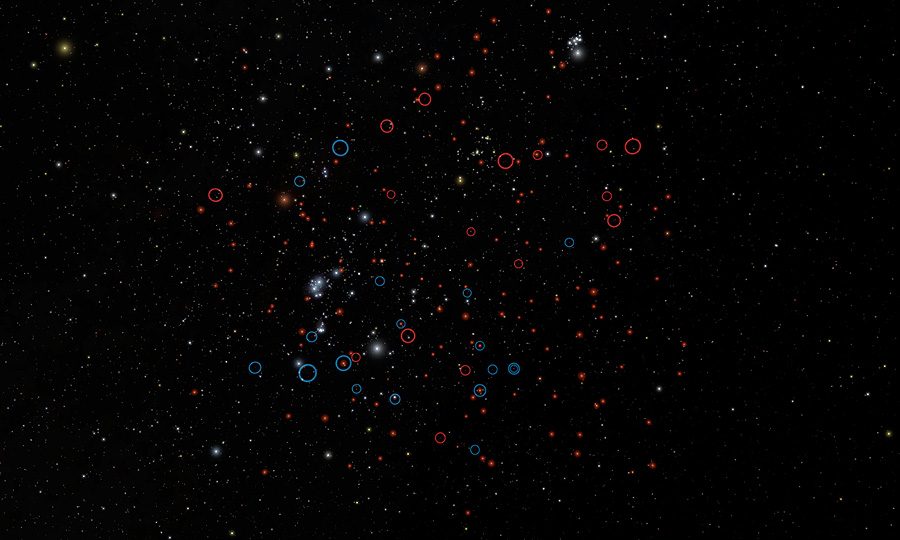This image shows our own back yard, astronomically speaking, from a vantage point about 30 light-years away from the sun. It highlights the population of tiny brown dwarfs recently discovered by NASA’s Wide-field Infrared Survey Explorer, or WISE (red circles). The image simulates actual positions of stars. (Image credit: NASA/JPL-Caltech)
Home This image shows our own back yard, astronomically speaking, from a vantage point about 30 light-years away from the sun. It highlights the population of tiny brown dwarfs recently discovered by NASA’s Wide-field Infrared Survey Explorer, or WISE (red circles). The image simulates actual positions of stars. (Image credit: NASA/JPL-Caltech) This image shows our own back yard, astronomically speaking, from a vantage point about 30 light-years away from the sun. It highlights the population of tiny brown dwarfs recently discovered by NASA's Wide-field Infrared Survey Explorer, or WISE (red circles). The image simulates actual positions of stars. (Image credit: NASA/JPL-Caltech)
This image shows our own back yard, astronomically speaking, from a vantage point about 30 light-years away from the sun. It highlights the population of tiny brown dwarfs recently discovered by NASA’s Wide-field Infrared Survey Explorer, or WISE (red circles). The image simulates actual positions of stars. (Image credit: NASA/JPL-Caltech)


